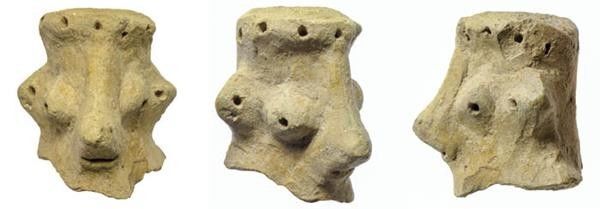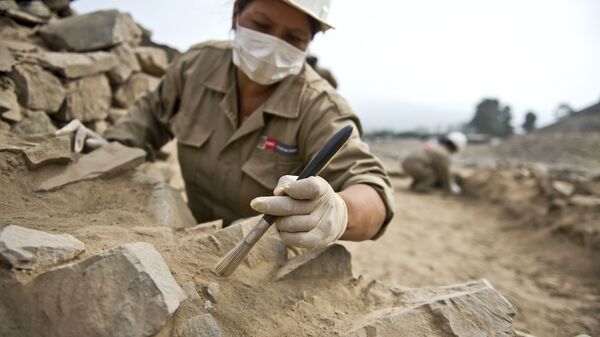A set of clay figurines discovered at the archeological sites of Khirbet Qeiyafa and Moza in Israel have become the focus of a controversy as scholars speculate whether these artefacts can be considered as representation of a “male god”, The Jerusalem Post reports.
Earlier, Dr. Yosef Garfinkel, a veteran archeologist from the Hebrew University in Jerusalem, brought forth a theory suggesting that an anthropomorphic clay head found at Khirbet Qeiyafa, along with two clay heads found at Mozaheads, that date back to the 9th or 10th century BC, may represent "a sculpted image of Y-H-W-H, the Tetragrammaton name of God in accordance with Jewish tradition", as the newspaper put it.

However, Professor Oded Lipschits, head of the Sonia and Marco Nadler Institute of Archaeology at Tel Aviv University, as well as his fellow TAU and Israel Antiquities Authority archaeologists Shua Kisilevitz, Ido Koch and David S. Vanderhooft, recently savaged Garfinkel's proposal in an article published by Bible History Daily titled "Facing the Facts About the Face of God".
The critics described Garfinkel's argument as "riddled with inaccuracies" and his methodology as disregarding "available evidence on ancient coroplastic [terracotta] art and the study of religion in ancient Israel".
"We reject Garfinkel’s presentation of the figurative clay artifacts, his interpretative framework and the alleged metaphor of Yhwh as a seated horseman," the scholars declared, as Garfinkel previously pointed out that the concept of God riding on horseback is mentioned repeatedly in the Biblical scriptures, while several of the figurines in question appear to represent a rider on a horse.
The archaeologists argued that, not only the aforementioned objects should not be grouped together because of their "their obvious typological, stylistic and technological differences", but also that, despite the fact that the terracotta heads were found in a "cultic context", there are no markers indicating that these heads were meant to represent gods.
"The main methodological transgression in Garfinkel’s article is the nearly complete disregard of current scholarship on clay figurines and coroplastic art from the ancient Levant and beyond", the critics stated. "Although past mainstream interpretation considered anthropomorphic clay figurines as representations of deities, recent scholarship shows that while some clay figurines could represent deities, most served other purposes, such as votive offerings placed by worshipers or charms utilized in rituals."



